Bladder Snails: Essential Facts and Care Guide

Bladder snails (Physa acuta) are fascinating little creatures that have gained much attention in the fish-keeping community. These abundant mollusk species are often unannounced in freshwater tanks and are considered invasive by many aquarium enthusiasts. However, there is more to these tiny gastropods than meets the eye.

As you learn about bladder snails, you’ll discover they are pulmonary creatures, meaning they breathe air. Uniquely, they swim upside down at the water’s surface to breathe air. If they sense danger, bladder snails can quickly retreat to the safety of the tank’s bottom by emptying the air from their respiratory system.
Remarkably adaptable, these snails can thrive in a wide range of environments and have an exciting ability to shake off leeches or other organisms hitching a ride on their shells.
As we delve further into bladder snails, we’ll explore their care requirements, breeding habits, and potential benefits for your aquarium ecosystem. Understanding these small yet fascinating creatures can help you decide whether they’re a welcome addition to your tank or better suited for other environments.
Contents
Table of Contents
Bladder Snails Overview

Bladder snails, belonging to the Physidae family, are small air-breathing freshwater snails found in various aquatic environments, including aquariums, ponds, and wild areas. Being part of the Physella genus, these tiny gastropods often go unnoticed, but they offer several benefits to your aquatic ecosystem.
As an aquarium hobbyist, you’ll appreciate the unassuming presence of bladder snails because of their low-maintenance care requirements and ability to help clean your tank. These gastropods feed on algae, dead plant matter, and even leftover fish food, which promotes a healthy environment for your aquatic inhabitants.
Bladder snails are known for their peculiar swimming behavior. They swim upside down at the water’s surface, where they can breathe air. They are pulmonary creatures, meaning they have lungs rather than gills. In case of danger, they retreat to the safety of the tank’s bottom by releasing air from their respiratory system.
Adding bladder snails to your tank can also be beneficial when it comes to preventing harmful infestations of other snails. However, they can also reproduce quickly, possibly leading to overpopulation if not properly managed.
In terms of appearance, bladder snails have a distinct shell shape, different from their pond snail relatives. The shell is usually 1/4 to 1/2 inches in diameter, with a conical shape and light or dark brown coloration.
Regarding their care, bladder snails do not have particularly demanding requirements. They adapt well to a range of water parameters, but providing a source of calcium will help them maintain a healthy shell. A proper diet mainly consists of algae and other organic matter, so ensure your tank provides sufficient nutrition. Remember that bladder snails can coexist with most fish species as tankmates, making them an ideal addition to diverse aquatic ecosystems.
In conclusion, bladder snails can be a valued addition to your tank, despite sometimes being considered a nuisance. By understanding their habits, care requirements, and potential benefits, you can ensure a thriving and healthy environment for your aquatic inhabitants.
Historical Distribution

Bladder snails, particularly the Physella acuta, have an intriguing historical distribution across various continents. This small, air-breathing freshwater snail can be found in Europe, North America, Africa, and Asia.
In Europe, Physella acuta was initially thought to be native to the continent, hence its common name, “European physa.” This belief has been revisited recently due to further research into their genetic connections and distributions across other continents.
North America has its native bladder snail species, such as Physa fontinalis, commonly known as the common bladder snail. However, Physella acuta was introduced to the continent and has since established a presence alongside native species. Research has indicated that this species may have originated in North America and been introduced to Europe.
In Africa, bladder snails have also found their way into the continent’s freshwater ecosystems. While some species might be native, others, like Physella acuta, are believed to have been introduced through human activity.
Finally, Asia has also seen the presence of bladder snails in its freshwater habitats. Like in other continents, the species have spread due to natural processes and human activity.
In conclusion, bladder snails have a diverse and widespread historical distribution. Their presence in Europe, North America, Africa, and Asia showcases their adaptability to various environments and ability to thrive in different ecosystems worldwide.
Habitat of Bladder Snails

Natural Habitats
Bladder snails, or Physa acuta, can be found in various freshwater environments such as rivers, ponds, streams, lakes, ditches, and even municipality drains. They thrive in slowly moving to stagnant water with lots of vegetation. Since they are highly adaptable, these snails can survive in polluted waters and swampy regions.
Their diet mainly consists of decaying plant matter and algae, allowing them to live in areas with abundant vegetation. As these snails can be found on all continents except Antarctica, they are quite versatile in terms of the habitats they can reside in.
Aquarium Settings
Depending on your perspective, bladder snails can be helpful and considered a nuisance in an aquarium setting. They are often introduced into a tank unintentionally since they hitch rides on plants or other decorative items. Once in an aquarium, bladder snails act as efficient cleaners, feeding on algae, dead plant matter, and leftover food, keeping your tank clean and reducing harmful substances.
To provide a suitable habitat for bladder snails, you should maintain suitable water conditions that mimic their natural environments. This includes having plenty of live plants and keeping the water pH between 7 and 8, with a temperature range between 64°F – 82°F (18°C – 28°C). Although they can tolerate a wide range of water conditions, ensuring that your aquarium has adequate filtration and is free from harmful chemicals is essential.
Bladder snails can coexist with most aquarium inhabitants, but be cautious when placing them with species that consider snails a food source. Some examples of such species are loaches, pufferfish, and certain cichlids. It’s always best to monitor the tank dynamics and make necessary adjustments for the well-being of all its inhabitants.
Physical Characteristics

Shell Description
The shell of an acute bladder snail is unique in its appearance. It has a sinistral or left-handed spiral, which means the shell’s opening is on the left side when viewed from the front. The shell size can reach up to 16mm in height and 9mm in width.
The pointed spire of the shell gives it a distinctive cone-like shape, and its color may vary from light horny yellowish to brown. This species does not have an operculum (trapdoor), a feature in some other snail species. The shell’s aperture, which is the opening through which the snail’s body emerges, is ear-shaped.
Body Description
The body of an acute bladder snail is quite interesting as well. It has a pair of fine, threadlike sensory tentacles with eyes at their base as clear black spots. These tentacles are important for the snail’s ability to navigate its environment and find food. The body is translucent, allowing you to observe its internal organs. You may notice the mantle, a fleshy layer covering the body, which is colorful with yellow-orange spots.
In addition to their unique shell and body features, acute bladder snails are interesting because they can breathe air, despite living underwater. This makes them adaptable to various aquatic habitats, including ponds and rivers, and relatively easy to care for in aquarium settings.
Species of Bladder Snails
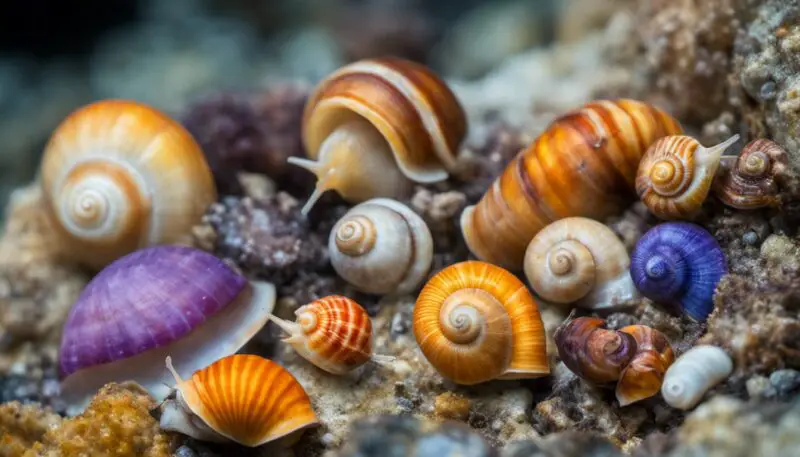
Bladder snails belong to the Physidae family and are commonly found in freshwater environments like ponds, aquariums, and the wild. One species you might come across is Physella acuta, sometimes called the European physa or the tadpole snail. This small, left-handed, air-breathing aquatic gastropod mollusk is known for its sinistral, or left-spiraling, shell.
Another type of bladder snail is Physa acuta, a synonym for Physella acuta. As the names suggest, these two species are virtually identical and share many characteristics, including appetite and peaceful nature. Physella heterostropha, also known as tadpole or pouch snails, is yet another synonym for Physella acuta.
The Physa integra species is also a part of the Physidae family and a synonym of Physella acuta. These snails are only about half an inch in size, and although aquatic, they still breathe air. They play an essential role in maintaining the balance of your aquarium by consuming excess algae and decaying organic matter.
Despite their small size, these bladder snails have a ravenous appetite, making them efficient aquarium cleaners. However, they can be considered pests if their population grows out of control. Keeping an eye on their numbers is essential to ensure a harmonious aquatic environment.
In conclusion, the bladder snail species, including Physella acuta, tadpole snail, Physa acuta, Physella heterostropha, and Physa integra, are fascinating creatures known for their unique features, such as sinistral shells and their appetite for algae. These tiny gastropods are essential for maintaining a healthy and balanced aquatic ecosystem.
Bladder Snails: Friends or Enemies?
Life Cycle and Breeding
Life Cycle
Bladder snails are an interesting and adaptable species in the aquarium world. They usually live for up to 2 years in freshwater environments, particularly in still water with temperatures ranging from 64 to 84 degrees Fahrenheit. They are known for their adaptability, surviving in various conditions such as freezing waters, polluted sewage waters, and highly contaminated rivers.
During their lifespan, bladder snails undergo a series of developmental stages. They start as eggs, hatch into juveniles, and mature into adults. Their growth rate depends on various factors such as water quality, temperature, and food availability.
Reproduction
Bladder snails are hermaphrodites, which possess both male and female sex organs 3. This unique characteristic allows them to reproduce with any other individual of their species, making them prolific breeders in a suitable environment.
When it comes to breeding, bladder snails usually lay their eggs in gelatinous masses on various surfaces within the aquarium, such as plants, decorations, or glass walls. Each mass contains several eggs, which generally hatch within two weeks, depending on the surrounding temperature and water conditions.
As prolific breeders, bladder snails can quickly multiply in your aquarium; this is something to watch out for, particularly if you want to manage their population, as they might compete for resources with other species in your tank.
Understanding bladder snails’ life cycle and breeding habits will help you manage their presence in your aquarium. Remember to observe their breeding habits and monitor their population to maintain a healthy and balanced ecosystem in your tank.
Behavioral Traits
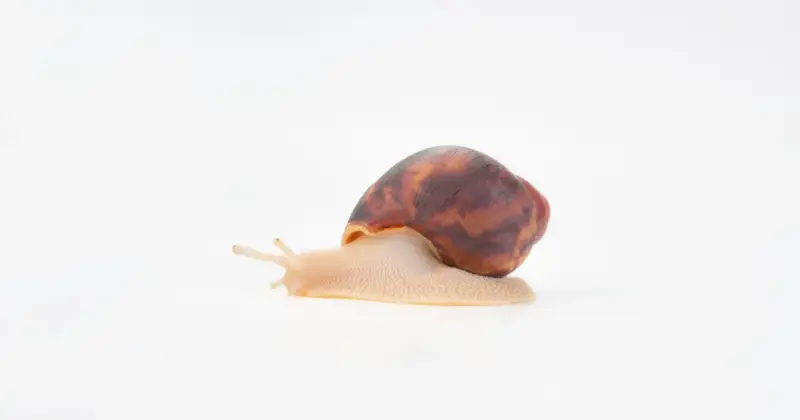
Bladder snails exhibit various interesting behaviors that you might observe in your aquarium. One of their most distinguishing traits is their ability to swim upside down on the water’s surface to obtain oxygen. This is because they are pulmonary or air-breathing creatures, which sets them apart from other snail species.
As you watch these fascinating creatures, you’ll notice that they are quite active and often move around the tank swiftly, making them entertaining to observe. Bladder snails crawl on various surfaces such as aquarium glass, plants, and decorations in search of food and ideal hiding spots.
Regarding their temperament, bladder snails are peaceful creatures that coexist well with other non-aggressive tank inhabitants. This makes them an ideal addition to a community tank as long as you know their prolific reproduction habits.
Bladder snails have a knack for finding hiding spots within your aquarium, often providing them with a sense of security and protection from potential threats. In case of danger, they can quickly empty the air from their respiratory system, enabling them to retreat to the bottom of the tank.
Now that you better understand bladder snail behavior and temperament, you can better appreciate these small yet intriguing creatures in your aquarium. Remember that they reproduce rapidly, so managing their population is essential if you don’t want them to overrun your tank.
Diet and Feeding
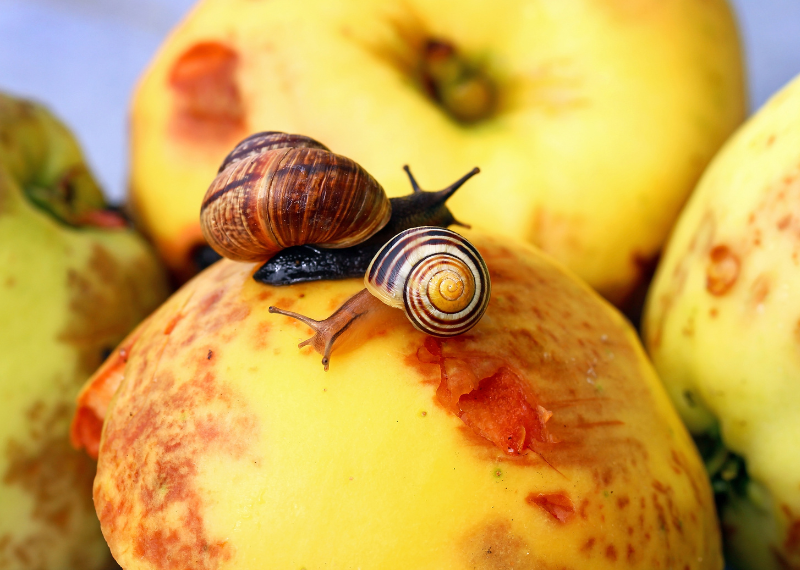
Bladder snails are known to be omnivores, which means they consume a wide variety of food sources in their diet. As an aquarium owner, understanding their dietary needs helps ensure the snails maintain optimal health and contribute to the balance of your aquatic ecosystem.
One of the primary food sources for bladder snails is algae. These snails act as effective algae eaters, helping control the growth of different algae in your aquarium. As they glide over surfaces like rocks, plants, and glass, they consume the algae and keep it under control.
In addition to algae, bladder snails feed on detritus found in the aquarium. Detritus is the accumulation of organic matter, such as waste material, decaying plants, and leftover food particles. By consuming detritus, bladder snails help to improve the water quality and maintain the cleanliness of your tank.
Moreover, bladder snails feed on decaying plants in the water. This includes fallen leaves, dead plant matter, and soft rotting parts of aquatic plants. By doing so, they not only consume a nutritious food source but also help maintain the health of the remaining living plants.
As omnivores, bladder snails will also consume insects when available. These might include small insect larvae, mosquito larvae, and other minute invertebrates. By feeding on various food sources, bladder snails help to keep your aquarium ecosystem balanced.
You may also want to supplement their natural feeding habits to provide a well-rounded diet for your bladder snails. This could include adding high-quality vegetable-based sinking pellets or blanched vegetables like zucchini or cucumber to your aquarium.
Furthermore, ensure a calcium source is available to promote strong shell health in your bladder snails. Crushed coral, cuttlebone, or calcium supplements can be placed in the aquarium to fulfill their calcium needs.
Bladder snails play a significant role in maintaining a clean and balanced aquarium ecosystem. By understanding their dietary preferences and needs, you’ll be better equipped to support their health and longevity in your tank.
Role in Ecosystem

Bladder snails, or tadpoles or pouch snails, are crucial in maintaining a balanced aquatic ecosystem. These snails serve several purposes as an essential part of the food chain.
First, bladder snails are proficient detritivores, meaning they primarily feed on decaying organic matter. Your aquarium or pond benefits from their presence, as they help to break down dead plants and animals, which aids in maintaining a cleaner environment. Interestingly, their ability to adapt to various environments, including polluted waters, makes them hard additions to any tank or pond.
In the aquatic world, bladder snails are prey for various predators, including crayfish, shrimp, and some fish species. These predators help control the population of bladder snails in your ecosystem, ensuring a balanced and healthy environment.
From an ecological perspective, bladder snails contribute to nutrient cycling in the water. When they feed on decaying matter, they release essential nutrients into the water, which plants and other aquatic species can utilize to support healthy growth and reproduction.
So, as you observe bladder snails in your aquarium or pond, understand their importance and the support they provide in maintaining a balanced and healthy ecosystem. These tiny creatures are crucial in sustaining your aquatic environment’s overall health and vitality.
Bladder Snails and Aquarium Trade
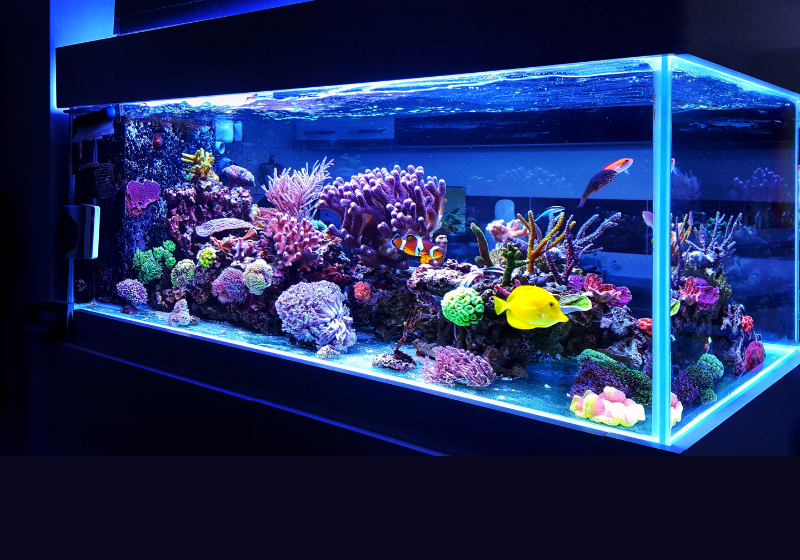
Keeping Bladder Snails
Bladder snails (Physa acuta) are a common and well-known example of invasive freshwater snails that often appear in the aquarium trade. Although deemed invasive and sometimes seen as pests, they still have their place in the hobby when cared for properly.
As they are hermaphrodites, bladder snails are proficient breeders, which can lead to a population explosion if you’re not careful. Keeping bladder snails can be an interesting addition to your freshwater tank, but manage their population efficiently.
Tank Conditions
For your bladder snails to thrive, it’s essential to have the appropriate tank conditions. The ideal tank size for bladder snails should be a minimum of 5 gallons, although they can also tolerate smaller tanks. Maintain a temperature of 64-84°F (18-29°C), and pay close attention to water parameters to ensure their well-being. The essential water parameters to monitor when keeping bladder snails include:
- pH level: 7.0-7.5
- General hardness (GH): 5-15 dGH
- Calcium: 20-50 mg/l
- Nitrate: <40 ppm
Additionally, bladder snails are sensitive to copper, so make sure there are no copper traces in the tank.
Bladder Snail Care
Caring for your bladder snails doesn’t require much effort, but some factors must be considered to ensure their well-being. Remember that bladder snails have a unique trait where their shells spiral to the left, making them distinct from other snail species. Proper bladder snail care involves:
- Feeding: Bladder snails are not picky eaters and will mostly feed on leftover fish food, dead plants, and algae in your tank. You can supplement their diet with calcium-rich vegetables like spinach and kale for shell health.
- Maintenance: Remove any unwanted snails regularly to control the bladder snail population. Additionally, monitor your tank’s water parameters and perform water changes as needed.
- Compatibility: Bladder snails can coexist with fishmates that do not prey on snails. Avoid stocking aggressive or snail-eating fish species to maintain harmony within your freshwater tank.
By following these bladder snail care steps, controlling their population and creating a healthy environment for them are achievable. Despite their status as invasive species, bladder snails can become an interesting addition to your aquarium if properly managed.
Fun Facts about Bladder Snails

Did you know that bladder snails are incredibly adaptable creatures? They can thrive in various water conditions, from slightly acidic to alkaline, making them a common sight in aquariums and natural freshwater habitats. Their adaptability is one of the reasons why they are often considered invasive species in some areas, as they can quickly colonize new environments.
Another interesting fact about bladder snails is that they are air-breathing. They possess a specialized lung-like cavity called a pneumostome, which allows them to take in oxygen from the air. This unique feature enables them to survive in water with low oxygen levels, giving them a competitive edge over other aquatic species.
Bladder snails also have a distinctive left-handed shell structure. While most snail species have shells that spiral to the right, bladder snails are sinistral, meaning their shells coil to the left. This unusual characteristic can help you easily identify bladder snails among other similar-looking species in your aquarium.
In addition to their adaptability, air-breathing abilities, and left-handed shells, bladder snails are also known by various synonyms. The scientific name, Physa acuta, is often used interchangeably with Physa heterostropha and Physa gyrina. While these names may cause some confusion, they all refer to the same fascinating mollusk.
To describe bladder snails, they are relatively small, with adult sizes ranging from around 6-12 millimeters. Their shells can be shades of brown or have a light, translucent appearance. One unique feature is that, unlike many other snail species, they have a tapered, almost conical shape with a pointed apex. This sleek design likely contributes to their swift movement, as they can glide quickly across surfaces for food.
In summary, bladder snails are remarkable creatures with several fascinating features to pique your curiosity. Remember their adaptability, air-breathing capabilities, distinct left-handed shells, various synonyms, and unique appearance when observing them. By understanding these facts, you can appreciate the wonder of these often misunderstood creatures.
Frequently Asked Questions
How big do bladder snails get?
Bladder snails generally grow up to 1 cm (0.4 inches) in length and 7 mm (0.3 inches) in width. The largest recorded size is 15 mm (0.6 inches) in length, but such specimens are rare. Their shells are left-handed and egg-shaped with a pointed tip, making them distinctive. You can find more details about their size and appearance here.
What eats bladder snails?
Several aquatic animals, such as loaches, pufferfish, and some turtle species, feed on bladder snails. Depending on the specific predators in your tank, these snails can act as a natural food source for your other aquarium inhabitants.
Are bladder snails pests?
Opinions on whether bladder snails are pests vary. Some aquarium enthusiasts view them as unwanted intruders due to their ability to reproduce rapidly and consume aquarium plants. On the other hand, bladder snails can help control algae growth, dine on leftover fish food, and reduce water murkiness. More about their mixed reputation can be found here.
Are bladder snails bad for your tank?
Bladder snails can be beneficial in small numbers since they help clean the tank by feeding on algae and uneaten fish food. However, a large population of these snails can become a problem, as they may consume live plants and compete for resources with other tank inhabitants. Managing their population ensures they do not harm your tank’s ecosystem.
Should I keep bladder snails?
The decision to keep bladder snails in your tank depends on your preference and your tank’s needs. If you seek an efficient cleaner to help control algae growth and thrive with minimal care, bladder snails might be a beneficial addition. However, be prepared to manage their population to prevent them from becoming a nuisance. Learn more about their care and benefits here.
How did bladder snails get in my tank?
Bladder snails often hitch a ride into your tank through live plants, decorations, or on the water surface when adding new aquarium inhabitants. They are expert survivors and may not be immediately noticeable, so it is essential to inspect and clean any new additions to your tank before introducing them. Here’s an overview of bladder snail facts and how they might enter your aquarium.

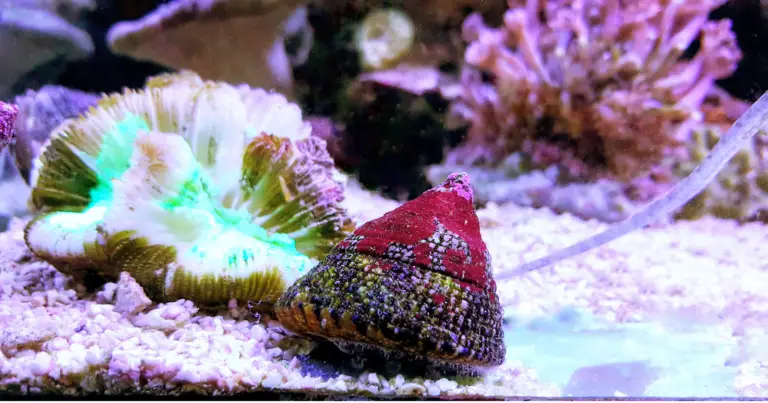
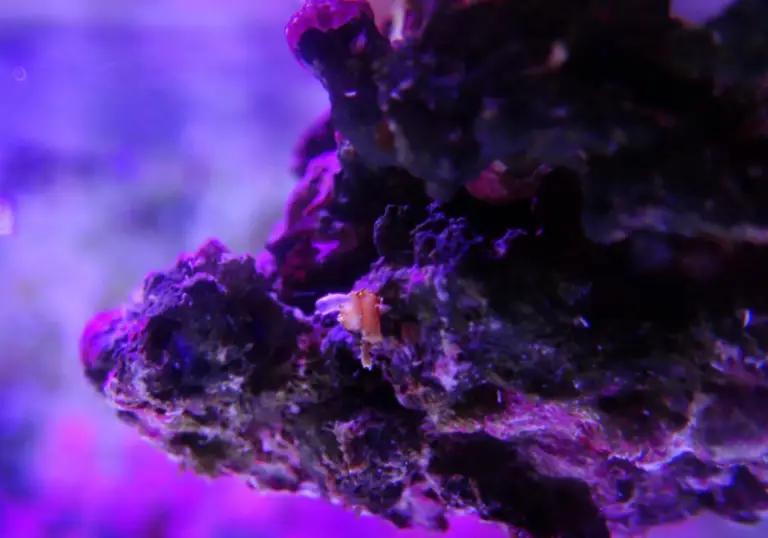
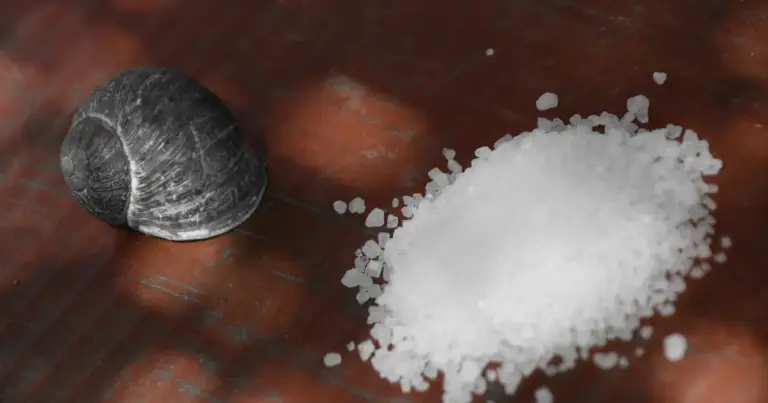
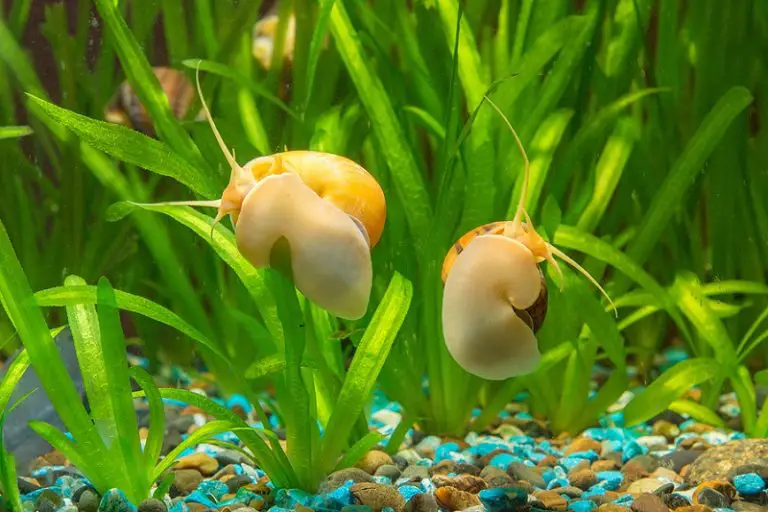
![Do Snail Shells Grow? [Full Guide]](https://allourcreatures.com/wp-content/uploads/2021/11/growing-snail-shells-768x501.jpg)
